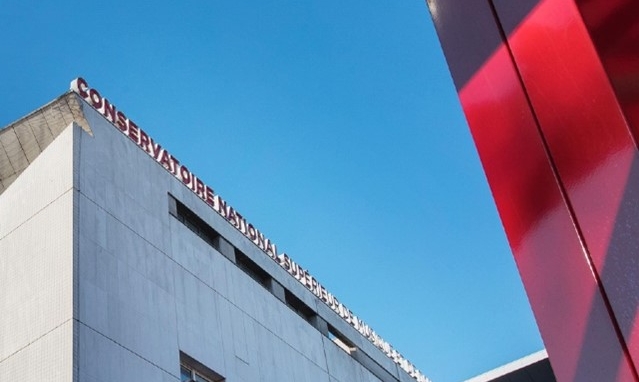News
Paris Conservatoire's Hidden Architecture
Friday, February 16, 2024

#DIESE is at the heart of the Conservatory's new IT ecosystem.
At the beginning of 2020, the Paris Conservatory of Music and Dance (CNSMDP) launched a comprehensive project to renovate their systems. Their clear goal: to digitize and optimize the management processes of facilities, classes, students, and staff.
A successful bet, which resulted in one of the widest scopes implemented for #DIESE, and in a project that IT4Culture takes great pride in.
Modules: A 360° Scope
The conservatory manages projects of all types within #DIESE; this includes cultural productions with their casts, as well as classes, exams, and all internal or external projects.
These projects are then scheduled in the General Planning module, which enables the use of hundreds of venues managed by the conservatory, including those outside its walls. Depending on their academic curriculum and rights, students can reserve a room to work or rehearse through the mobile portal #MyDiese.
When reservations are made for external partners, in the context of privatizations, they are managed through the Sales module. The complete process goes from quote generation with an automated pricing grid to concrete planning and finally billing.
Thanks to the Stocks module, the conservatory's musical instrument catalog has been fully digitized and is now accessible on the conservatory's website (see our case study). Several online catalogs (ancient music, wind instruments, percussion, etc.) are open for consultation, facilitating loan requests. Loan records and related document issuance (loan forms) are handled within #DIESE.
There's more: technical teams involved in artistic activities are scheduled in the Time and Activities Management module.
Underlying the whole, an advanced Contacts database hosts more than 1,300 students – including many children – 600 teachers, 300 other staff members, as well as guest artists, suppliers, booking clients, partner organizations, etc.
In this context, the data interface between #DIESE and the OASIS PRO school management software is a crucial process.
One School Administration Program; Multiple Flows with #DIESE
As in any school, information regarding students and their enrollment first enters the school management software: OASIS PRO.
An initial interface from OASIS PRO creates or updates student and teacher contact sheets in #DIESE, with diverse information such as their contact details, those of their parents, administrative information, or badge numbers. This interface immediately creates access to the mobile portal #MyDiese, where everyone can view their schedule, find information about productions, and make room reservation requests.
Through another interface, classes created in OASIS PRO with their students and teachers are added as projects in #DIESE, facilitating their practical scheduling. At the end of the process, the final schedule is sent back to OASIS PRO to manage attendance.
Other interfaces are in place at CNSMDP, and more are planned. Using automatic data transmission is fully aligned with the intelligent information sharing approach implemented at CNSMDP.
Always Up-to-Date, Never Printed Information
Programs, schedules, and participations are accessed by students, teachers, and staff in real-time. The main sharing tools are:
- #MyDiese: #MyDiese users can view their personal schedule, project details, submit and track space reservation requests, and even create technical request forms for exam recitals;
- The .ics format synchronization links: the scheduler can generate in #DIESE a link to a selected set of activities, to be directly integrated into the usual calendar application of their contacts (Outlook, Google Calendar, iCal...). These links are shared, for example, with students for their course schedules;
- The consultation mini-website: the dynamic documents available in #DIESE (production sheets, orchestra schedules, daily plans...) can be integrated to a light, website-like structure with tabs, intended for those without access to the software. This sharing method, increasingly encouraged by us, is particularly relevant in configurations with a large number of information recipients.
The Conservatory has identified relevant processes to share key information concerning the entire structure. Result: a program used by all departments, and streamlined and reliable sharing practices.
Photo: Dance Reflections by Van Cleef & Arpels